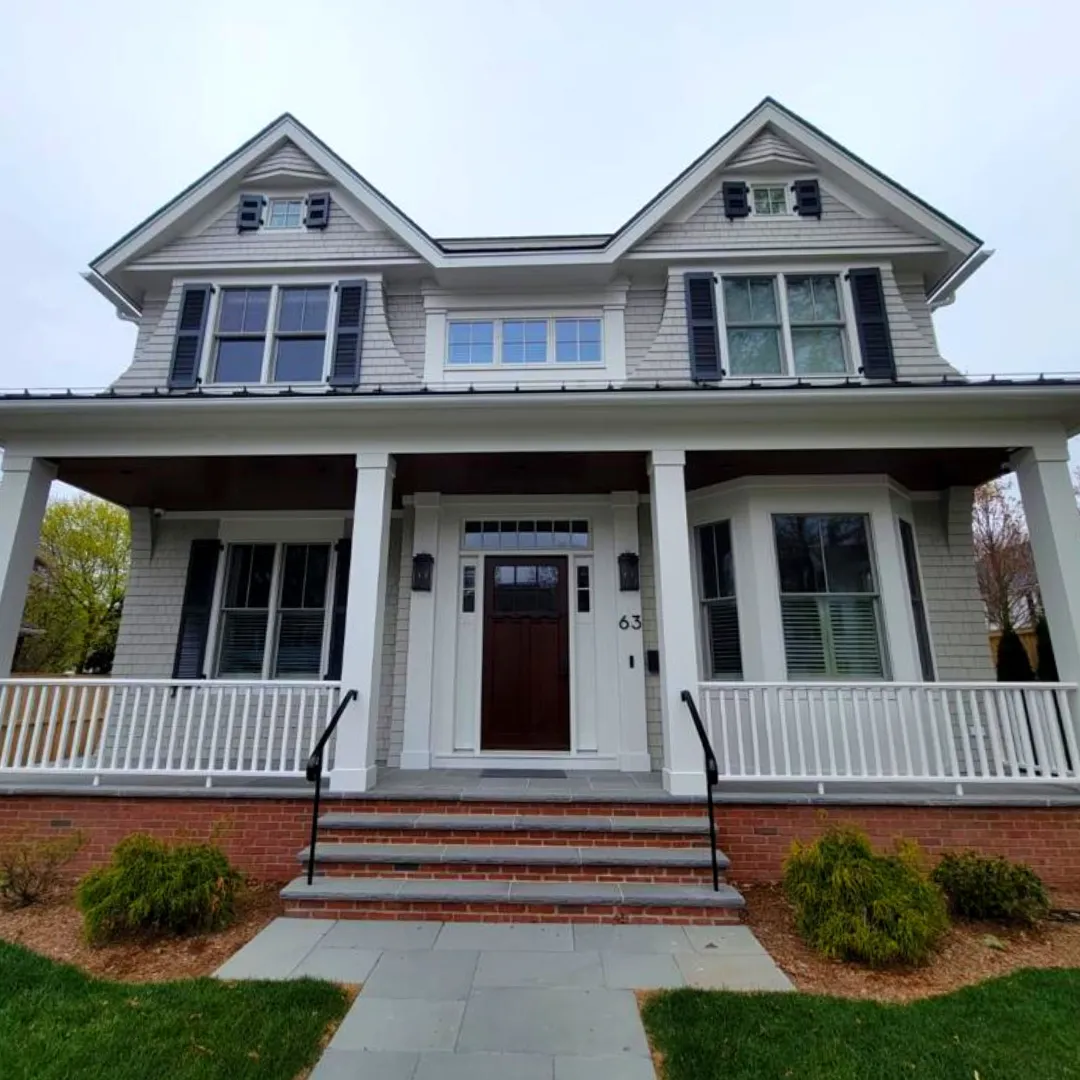Blogs

Neutral Exterior Paint Colors – Timeless & High-Value Options
The exterior of your home is its first impression, a statement about your style and the care you put into your property. When it comes to choosing an exterior paint color, the decision can feel monumental, impacting curb appeal, perceived value, and how your home blends with its surroundings. While bold hues have their place, neutral colors consistently remain a popular and savvy choice. Understanding the best neutral colors for exterior house painting can help you create a timeless, appealing, and versatile look that stands the test of time and trends.
Why neutrals are a safe choice for home exteriors
Opting for neutrals on your home's exterior offers a wealth of benefits that make them a consistently safe and smart choice:
Timeless Appeal: Unlike trendy, vibrant colors that can quickly look dated, neutrals possess a classic elegance that never goes out of style. This ensures your home maintains a sophisticated look for years to come.
Versatility: Neutral backgrounds are incredibly versatile, allowing you to easily update your home's look with seasonal decor, landscaping changes, or by simply refreshing accent colors on doors and shutters.
Broad Appeal: Neutral palettes have universal appeal. They are widely liked, making your home more attractive to a wider range of potential buyers if you ever decide to sell. They don't impose a specific taste or style, allowing others to envision their own aesthetic.
Harmonious Integration: Neutrals effortlessly blend with natural surroundings (trees, sky, landscaping) and blend well with fixed elements of your home, such as roofing materials, brick, stone, or existing window frames.
Enhanced Architectural Features: When paired with contrasting trim and accent colors, neutrals can make architectural details like columns, gables, and decorative moldings truly pop, highlighting your home's unique character.
Warm vs. Cool neutrals for curb appeal
Even within the realm of neutrals, there are distinct undertones that can dramatically change your home's curb appeal.
Warm Neutrals (Beiges, Creams, Tans, Warm Grays/Greiges):
Characteristics: These colors have undertones of yellow, red, or brown. They evoke feelings of warmth, comfort, and invitation.
Ideal For: Homes seeking a classic, cozy, or traditional look. They pair beautifully with natural wood accents, warm-toned stone, and earthy landscaping. They can help a home feel more grounded and welcoming.
Consideration: In very sunny climates, overly warm yellows or oranges can feel too intense. Look for muted versions.
Cool Neutrals (Cool Grays, Greiges with blue/green undertones, Whites with blue/gray undertones):
Characteristics: These colors have undertones of blue, green, or violet. They evoke feelings of sophistication, crispness, and modernity.
Ideal For: Contemporary homes, coastal styles, or properties where you want a clean, sharp, and serene aesthetic. They pair well with bright white trim, black accents, and cool-toned landscaping.
Consideration: In overcast climates, very cool grays can sometimes feel a bit cold. Balance with warmer accent colors or natural materials.
Tip: Observe your home's fixed elements (roof, brick, stone, pathways). Do they have warm or cool undertones? Choosing a neutral paint that harmonizes with these existing elements creates a cohesive and appealing exterior.
Paint longevity under sun and weather
The durability and appearance of exterior paint are significantly affected by environmental factors.
Sun Exposure: UV rays are the primary cause of paint fading.
Darker Colors (even dark neutrals): Tend to absorb more heat and UV radiation, which can accelerate fading over time.
Lighter Neutrals: Reflect more sunlight, making them more resistant to fading and keeping the house cooler, which can be an energy efficiency benefit.
High-Quality Paint: Regardless of color, using a premium exterior paint formulated for UV resistance will always provide better longevity against fading, chalking, and blistering.
Weather Extremes (Rain, Snow, Humidity):
Moisture Resistance: High-quality exterior paints are formulated to resist moisture penetration, preventing blistering, peeling, and mold growth.
Dirt and Grime: Lighter neutrals may show dirt, dust, and grime more visibly than mid-tone or darker colors, potentially requiring more frequent light cleaning or washing. However, their superior fade resistance often makes up for this.
Algae/Mildew: In humid or shaded areas, certain neutral colors may show mildew more readily. Opt for paints with mildewcide additives for these regions.
Choosing a Sheen: For exteriors, a satin or low-sheen finish is generally recommended. It provides good durability, is easier to clean than flat, and offers a subtle luster without being overly reflective.
Trim and accent color pairings
The right trim and accent colors can elevate a neutral exterior from simple to stunning.
Classic White Trim: A timeless choice that creates crisp contrast against virtually any neutral body color (grays, beiges, taupes, greens). It highlights architectural details beautifully.
Dark Trim (Charcoal, Black, Deep Bronze): For a more modern or dramatic look, dark trim can add striking contrast, especially against lighter neutral body colors.
Accent Colors (Front Door, Shutters, Flower Boxes):
Pop of Color: Use your front door to introduce a bold or vibrant accent color (e.g., a rich red, deep blue, or vibrant green) that complements your neutral body and trim.
Natural Accents: Earthy tones, wood stains, or copper accents can add warmth and texture against cooler neutrals.
Monochromatic Schemes: For a subtle, sophisticated look, use varying shades of the same neutral for the body, trim, and accents.
Tip: Take paint samples and hold them up against your existing roof, brick, or stone to see how they interact. Consider how the light changes throughout the day.
Resale-friendly exterior palettes
If resale value is a primary concern, these neutral exterior palettes are consistently strong performers:
Warm Gray with White Trim: A sophisticated and modern choice that balances warmth and coolness. It feels fresh and inviting.
Greige with Cream Trim: The ultimate chameleon, greige adapts to various light conditions and complements both warm and cool fixed elements. Cream trim offers a softer, welcoming contrast than stark white.
Soft Beige/Tan with Off-White Trim: Creates a cozy, traditional, and welcoming feel. Pairs beautifully with brick or stone foundations.
Light Blue-Gray with Crisp White Trim: A popular choice for a coastal or serene aesthetic. It feels clean and airy.
Subtle Sage Green with Cream or White Trim: Connects the home to its natural surroundings, offering a calming and sophisticated curb appeal.
When selecting exterior paint, remember to view large swatches in natural light, observe them at different times of day, and consider how they interact with your home's fixed features. A professional painting service can also offer valuable insights and bring your chosen palette to life with a flawless finish.
Choosing the best neutral color for your home's exterior is an investment in its beauty and longevity. With the right selection, your home will exude curb appeal and make a lasting positive impression for years to come. Ready to give your home a stunning exterior transformation?
About Masterpiece Painter
For over 17 years Masterpiece Painter, has been serving communities all around New England. Let us help you make your wishes come true by turning your property into a Masterpiece
Get a Quote

© copyright 2023 All Rights Reserved.



